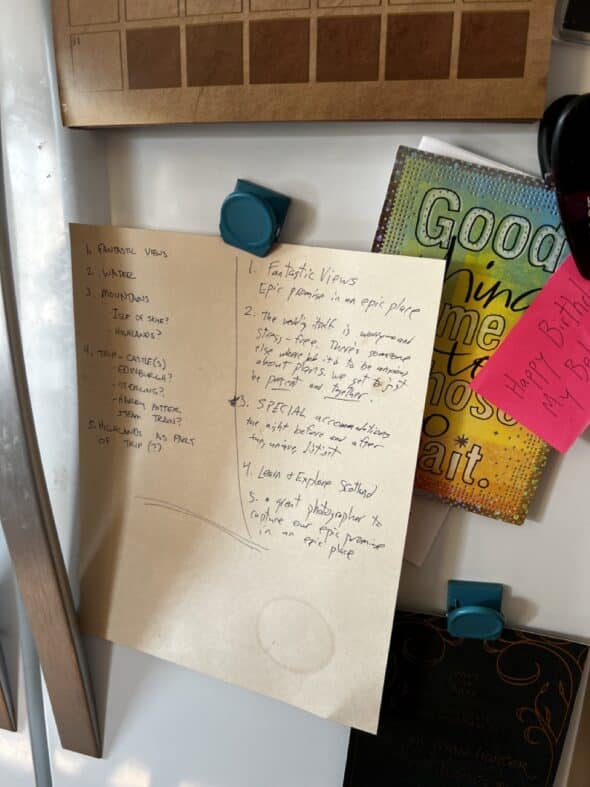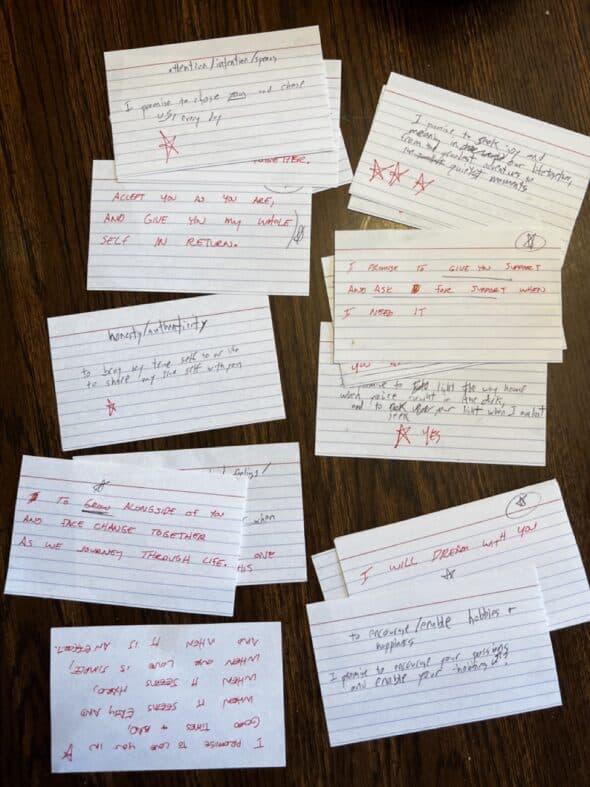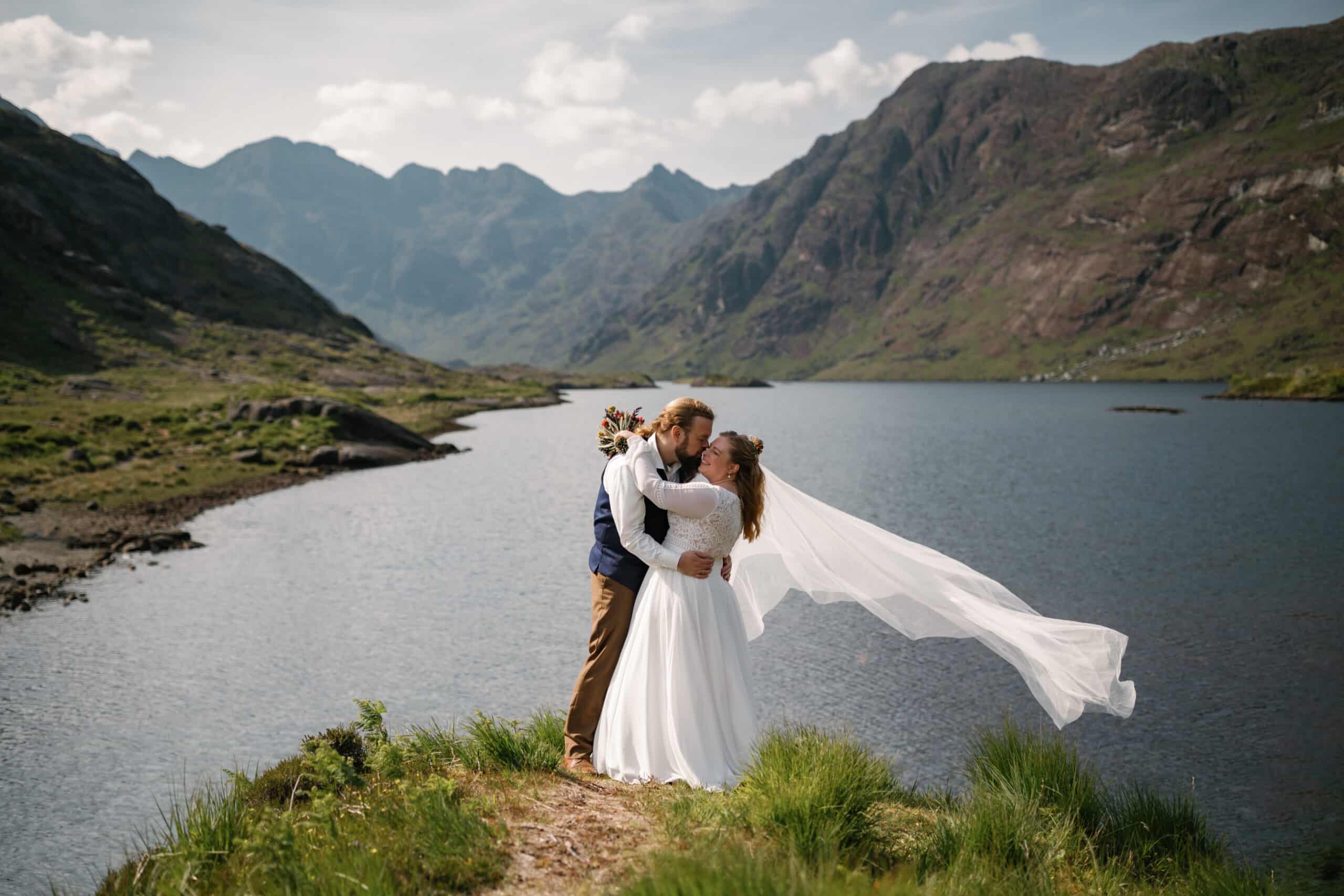My partner and I got married last month! And as you might know, if you’ve gotten married, been a part of a wedding, or been anywhere near somebody who’s involved in wedding planning, a lot of puzzle pieces come together to make it the perfect day. Ours was perfect, if a bit unusual. We eloped to Scotland and said our vows in a private ceremony on the Isle of Skye, standing at the foot of the Black Cuillin mountains with the Atlantic on one side and a legendary freshwater loch said to be “the wildest scene in the highlands” on the other. Then we visited a ruined castle straight out of Celtic mythology.
With all the places one might choose to elope, how did we choose this one? And with only six months of planning, how did we manage to do everything we needed to do, keep our sanity (mostly) intact, and even strengthen our relationship in the process?
Well, I’m an experienced software consultant, and my husband Matt is an academic librarian who specializes in scholarly communication. In other words, we’re both deeply nerdy. We’re also pretty good at using tools and systems to bring people together, generate alignment, and create order from chaos. Here are some tools and ideas we grabbed from our work lives to help support our wedding planning process.
1. We used design principles to guide our choices.
One night over dinner as we began the planning process, I asked Matt about his top five priorities for our elopement trip. As he began talking, I grabbed a pen and paper and started transcribing his thoughts. Then he took the pen and paper and wrote while I talked. While we didn’t call it out as such, what we were doing was creating our design principles. Design principles have the purpose of guiding decisions throughout a software project. Faced with endless decisions and complex tradeoffs, it can be exhausting and difficult to achieve alignment within a software team, and easy to get caught in endless cycles of analysis paralysis. But design principles serve as a reference and guiding star to the team, creating a reference point and making it easier to move forward with confidence.
Our design principles document lived on our refrigerator for the next several months and became our reference when making decisions. For example, time management and logistics coordination skills are a natural strength. This is handy when leading a meeting, managing a software project, or hosting a party.
It also makes it hard for me to be present in the moment. So one thing that was important to me was handing those responsibilities for our special day off to somebody I could trust. This influenced who we hired to photograph and officiate, and other decisions for how we structured our day. And it worked great. We had exactly the day we wanted, focused on one another and the beautiful scenery around us.

2. We used our favorite project management tools to stay aligned.
“I’m a freak in the Google Sheets,” I said to my future husband as I unveiled our wedding project tracker. Surprisingly, he still married me. However, it was truly helpful to have a running tally of our wedding expenses and outstanding todos, that we could each reference and add to at any time. Matt took the lead on planning the itinerary for our two-week elopement and honeymoon trip, which lived in a Google doc (the librarian’s tool of choice for organizing information).
We’ll continue using docs and sheets in managing our household together. What I like about these tools is they aren’t complicated to learn and don’t require a subscription, but they have everything we need to support robust communication and information sharing.
3. We used card sorting to write our vows collaboratively.
It was a week before our departure, and we were close to a final draft of our ceremony (another Google doc). But, we still hadn’t aligned on what we wanted to say in our personal vows. So we took a stack of notecards to our local pub and, waiting for our entrees to come out, we wrote down our thoughts about what we wanted to include, one thought per card. Then, as we shared, we grouped them into similar themes, using the same technique as creating an affinity map. We found we had an almost 1-1 correlation for each of our cards… a comforting sign that we’re well-suited to life as partners.
From there, after we enjoyed our dinner, it was easy to put the concepts into an order that made sense. After wordsmithing them a little, we had our wedding vows, just like that.

The tools and ideas that we used to stay sane and (mostly) happy in our wedding planning process aren’t complicated or proprietary, but they sure helped us keep things fun and conflict-free as we prepared for the biggest moment in our lives.

I hope these ideas can help other couples, too!

